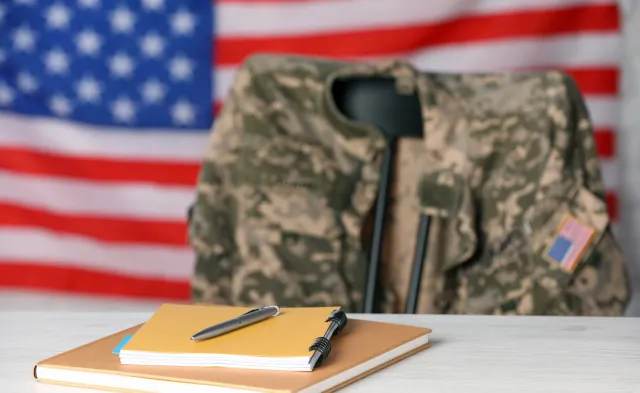Latest
The Importance of the Pinning Ceremony for Nurses
Nov 9, 2020

Graduation ceremonies are common after academic study. Students look forward to the mortarboard hats and gowns that are accompanied by diplomas and commencement ceremonies. But did you know that nurses have their own special ceremony for the completion of their studies in addition to graduation?
What exactly is the pinning ceremony?
The pinning ceremony is a unique and special ceremony for the nursing community. Many nurses hold the pinning ceremony in higher regard than they hold their school commencement. It is because the pinning ceremony isn’t just a nursing tradition, it is a symbol of the nursing students’ hard work and dedication towards their coursework and clinicals. The pinning ceremony is offered to nursing students who have completed their diploma in practical nursing to become a licensed practical nurse (LPN), or their associate degree in nursing (ASN) or Bachelor of Science in Nursing (BSN) to become a registered nurse (RN).
Like graduation, it is an opportunity to celebrate the accomplishment of becoming a nurse with family, friends and faculty. However, pinning is not a graduation. Many students at their pinning ceremony still need to sit for the National Council Licensure Examination (NCLEX) before they can officially begin working as a nurse. While graduation highlights the completion of academic study, the pinning ceremony marks the important transition from student to nurse.
What is the history of the pinning ceremony?
The pinning ceremony has roots from the 12th century when knights who aided the sick and infirm were given a Maltese cross to wear. Today’s pinning ceremony is closely tied to an award given to legendary nurse Florence Nightingale. Known as the mother of modern nursing, she was awarded the Red Cross of St. George in the 1860s for her tireless work during the Crimean War. To share this honor, Florence presented a medal of excellence to her brightest graduates. Soon, the Nightingale School of Nursing at St. Thomas Hospital in London designed and awarded a badge with a Maltese Cross to all nurses as they completed their program.
By 1916, the practice of the pinning ceremony was standard throughout the United States and England. The badge symbolized educated women who were competent to serve as a nurse to provide healthcare to society. Each school of nursing designed and awarded its own customized pin. Some schools included images and colors to represent different meanings for their graduates.
What happens at the pinning ceremony?
Just like at graduation, students can invite their family and friends to join them to celebrate this public event. There may be some faculty and student addresses describing the students’ achievements, and they might also share some stories about the cohort.
Before the ceremony, the nursing student could choose a significant person in their life to dedicate the pin to. This could be a faculty member, a close friend or a family member. This individual will follow the graduate onto the stage where they will be given the pin to place on the graduate. During this process, a faculty member sometimes will read the dedication from the student to the significant person. This can be an emotional portion of the ceremony for students and attendees as it’s often very personal for students.
Students will be given a history of the pinning ceremony, usually read by a faculty member who will address the cohort. This gives students and attendees who don’t know about the significance of the pinning ceremony the opportunity to learn more.
Typically, there is also a candle lighting portion of the ceremony to commemorate Florence Nightingale as the “lady with the lamp.” It may also symbolize the later rounds at night that a nurse may have to make while on the job. A candle will be lit, and the graduates will be given their own candle to hold. This could be in the form of an actual candle or an LED light. During the lighting of the candle, students will recite the Nightingale pledge or the International Council of Nurses Pledge. With this pledge, the nurses pledge that they will do no harm, maintain confidentiality, strive for excellence and uphold the Hippocratic oath.
Students then mingle after the ceremony and there may be pictures and gift-giving. If you expect to be given gifts, the pinning ceremony might be a good time to ask for things you need as a nurse like a stethoscope, scrubs, durable shoes, socks and more!
Why is it important?
The pinning ceremony is distinctive for the nursing community and is unlike any graduation ceremony. It is the first time a nursing graduate enters the nursing community with its rich and proud history. Not only does it mark the completion of student coursework, but this ceremony honors nursing graduates who will work in a career where they will have to be selfless for the good of many others.
At Herzing, we still offer a pinning ceremony for all nursing graduates and plan to continue the tradition, not only because of its rich history but also because of its significance to our students.
Learn More About Our Nursing Programs
Bureau of Labor Statistics (BLS), U.S. Department of Labor, Occupational Employment and Wage Statistics 2023 / Occupational Outlook Handbook 2022. BLS estimates do not represent entry-level wages and/or salaries. Multiple factors, including prior experience, age, geography market in which you want to work and degree field, will affect career outcomes and earnings. Herzing neither represents that its graduates will earn the average salaries calculated by BLS for a particular job nor guarantees that graduation from its program will result in a job, promotion, salary increase or other career growth.
Latest
Recent Blog Posts
Subscribe to our Newsletter
Get the latest news you need to know, from study hacks to interview tips to career advancement. Have it delivered right to your inbox biweekly.








